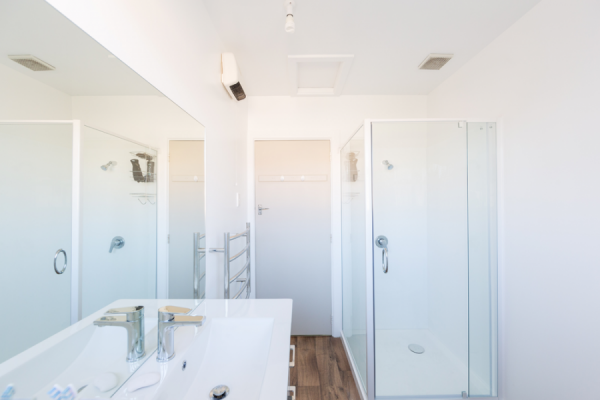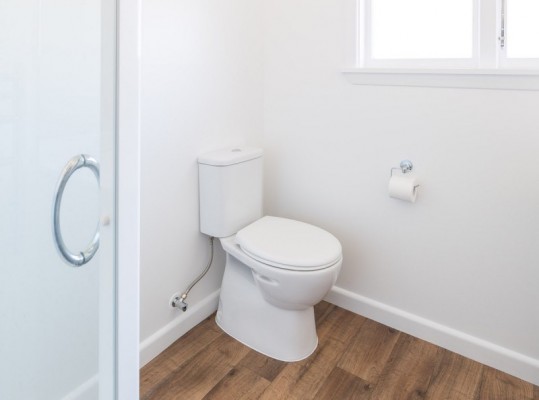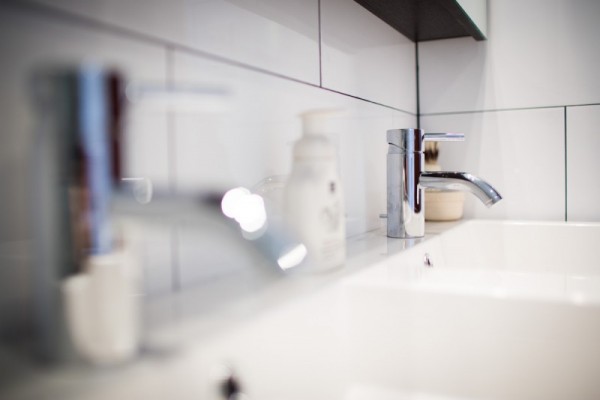
Switched On Group is the industry best for service and delivery in the building and maintenance sector.
Date: 3 September 2017
Your bathroom is a busy place; it gets a lot of use so making it a nice place to be is worth it. Although even minor renovations will set you back a few thousand dollars, it doesn’t need doing often and it adds more value to your home.
Here are a few things to consider when planning on transforming your bathroom into a functional space that’s within your financial reach.
Setting the budget
A basic overhaul of a small bathroom (five square metres) will roughly cost $7000-$10,000, a medium-size bathroom (10 square metres) will cost $10,000-$15,000, and a large bathroom (15 square metres), $15,000-$20,000.
A basic bathroom update would consist of off-the-shelf products, plumbing left where is and painted walls. This is a good option for a quick spruce up if you are selling.
To begin, make a floor plan and start shopping around. You don’t have to be ready to buy anything yet but it will give you a good idea of how much things cost. This will help you set your budget. Visit bathroom and plumbing showrooms, even building company show homes to get an idea of what can fit in different spaces.
Whatever figure you land on as your budget, add at least 10%, if not 20% as a contingency.
Keep the layout
The pipes are where they are so all your main fixtures (certainly any plumbed ones) will stay in the same location. Moving the pipes means extra costs in replumbing and rewiring. However, if it’s going to significantly improve the usability of the room then the cost may be worth it.

Repairs
When the existing vinyl is removed you may discover asbestos or water-damaged floorboards, especially if the house is older; this may also mean your pipes need upgrading too. For small budgets, opt for plastic over copper piping. Make sure you have contingency in your budget for repair work; if you don’t need it, you could save it for another project or upgrade one of the other items in the bathroom.
Water pressure
A renovation is a good opportunity to address water pressure. Mains pressure is when the hot water pressure is strong and about equal with the mains cold water pressure. Low pressure is when the hot water pressure is lower than the mains cold water pressure.
Older hot water cylinders were not built with the strength to handle strong hot water pressure. Knowing what kind of hot water pressure you have will help you choose the best tap ware.
If you have low pressure, use your renovation as a chance to convert to mains pressure by having your plumber install a mains pressure hot water cylinder or even convert to a continuous gas water heating system. It costs from about $2,200 to upgrade to mains pressure including the supply of the fittings and the full installation depending on how much work is needed and the of system you choose.
Showers, baths and toilets
The variation in these fixtures is incredible; with so many different styles available this is an area where you could easily overspend or save some money in the budget by selecting a more cost efficient option.
As a space and money-saving tip, showers can be installed over baths, using a shower curtain or glass panel. Do you need a bath or will just a shower do?
When choosing a toilet, get one that can easily be retrofitted. Look for a flexible wait and multiple water inlets. Chances are your old toilet uses a lot of water so choose something more efficient.

Vanities and fittings
Vanities are functional and also a design feature so this is an item worth spending a little bit on. A mirror on the wall, rather than on the front of a cabinet doesn’t take up any space and it’s also more affordable.

Lighting
As well as an extractor fan (this is a wet room after all) you’ll also need lights. Depending on the size of the room, four is usually more than enough. A heat/light/fan ceiling combo is quite common and a good way to get what you need within budget.
Flooring
This is another area in which you will find your budget quite flexible. With such a huge range of options and suppliers you can shop around for what you want. Ceramic tiles, vinyl, vinyl timber planking, whatever you choose it needs to be slip and waterproof.
Labour
How much of the work you will do yourself – or CAN you do yourself? DIY saves money but leaves room for mishaps so be honest about when you need to leave it to the professionals. You’ll need an electrician to install and wire your power outlets, a plumber for any pipework, a builder to adjust any timber framing and re-line your walls and a flooring installer.
There you have it, all the basic necessities to factor into your bathroom renovation budget. Good luck planning and enjoy your brand new space when it’s complete.






